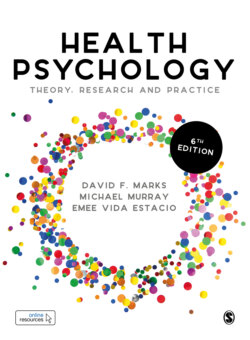Читать книгу Health Psychology - Michael Murray - Страница 92
На сайте Литреса книга снята с продажи.
Ayurvedic medicine
ОглавлениеThe Ayurvedic system of medicine is based upon the Sanskrit words ayus (life) and veda (science). This system is practised extensively in India. It is estimated that 70% of the population of India and hundreds of millions of people throughout the world use Ayurvedic medicine, which is based on Hindu philosophy (Schober, 1997). Both the cosmos and each human being consist of a female component, Prakrti, which forms the body, and a male component, Purusa, which forms the soul. While the Purusa is constant, the Prakrti is subject to change. The body is defined in terms of the flow of substances through channels. Each substance has its own channel. Sickness occurs when a channel is blocked and the flow is diverted into another channel. When all channels are blocked, the flow of substances is not possible and death occurs. At this stage, the soul is liberated from its bodily prison. The task of Ayurvedic medicine is to identify the blockages and to get the various essences moving again. The different forms of imbalance can be corrected through both preventive and therapeutic interventions based on diet, yoga, breathwork, bodywork, meditation and/or herbs (Schober, 1997). The use of herbs plays a major role in the treatment and prevention of illnesses (see Table 6.1 below).
As in TCM, the Ayurvedic system informs beliefs about health and illness through the Indian sub-continent and among Indian communities everywhere. However, Ayurvedic medicine has not dominated Western biomedicine, even within India. There is a variety of other competing health belief systems in a pluralistic health culture. In an interview study of a community in northern India, Morinis and Brilliant (1981) found evidence not only of Ayurvedic beliefs, but also beliefs on ‘unami’ (another indigenous health system), allopathic, homeopathic, massage, herbalist, folk, astrologic and religious systems. They note that while these systems may formally seem to conflict, participants can draw on some or all of them to help explain different health problems. Further, the strength of these beliefs is related to the immediate social situation and the roles and expectations of the community. For example, for women in some parts of Pakistan, the health belief system is a mixture of biomedicine and unami medicine, which is a version of Galenic medicine.
